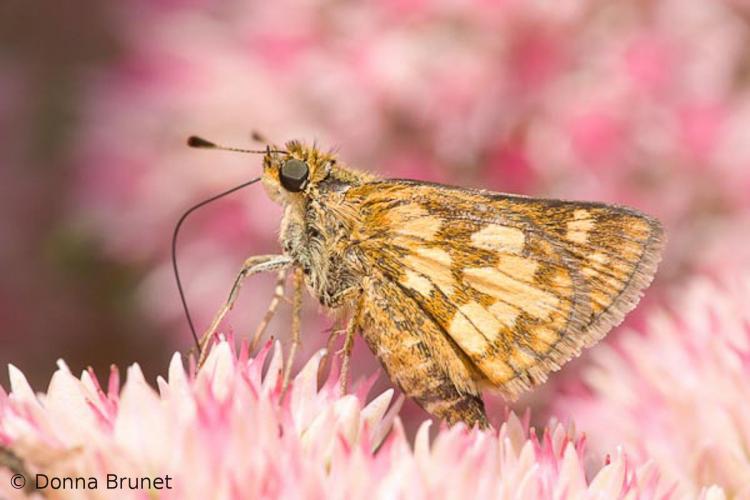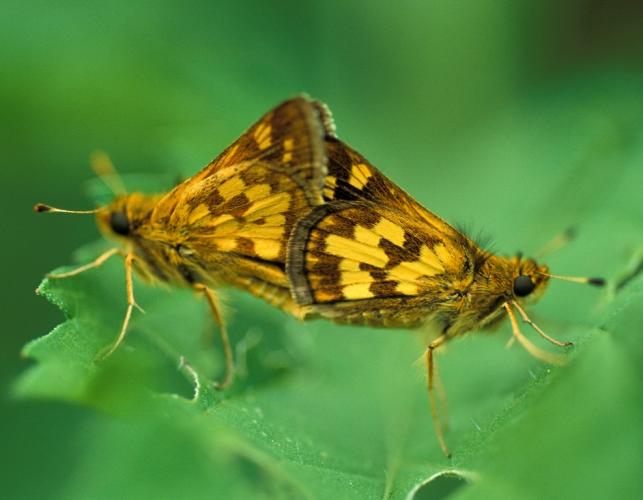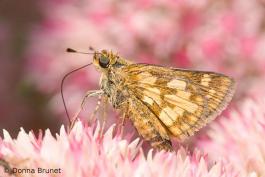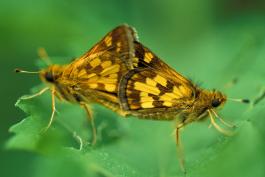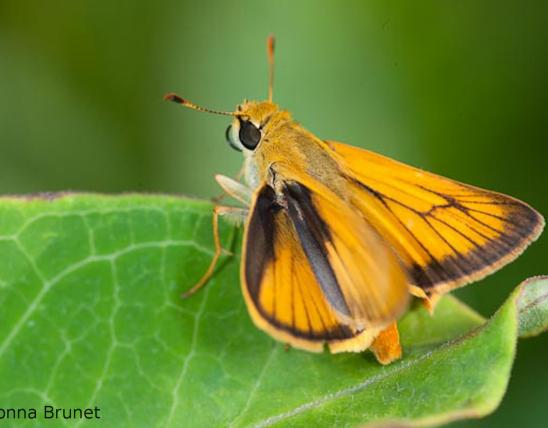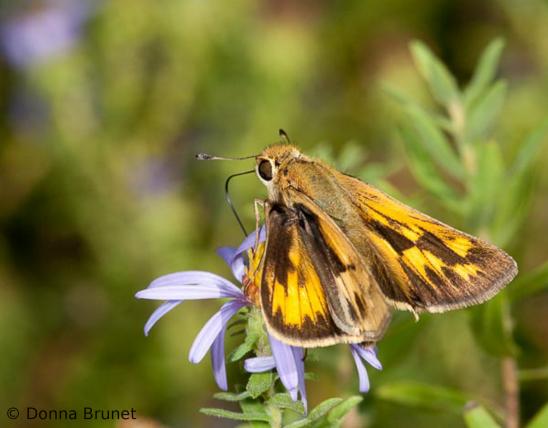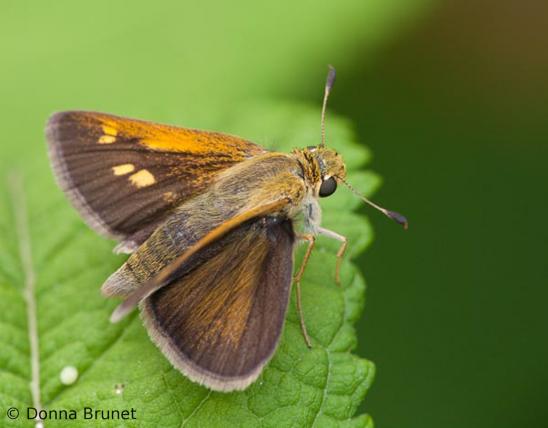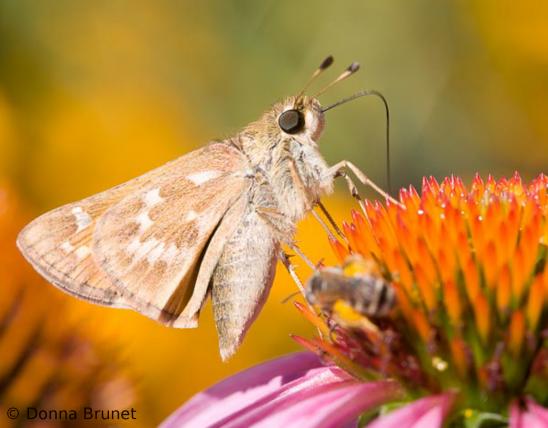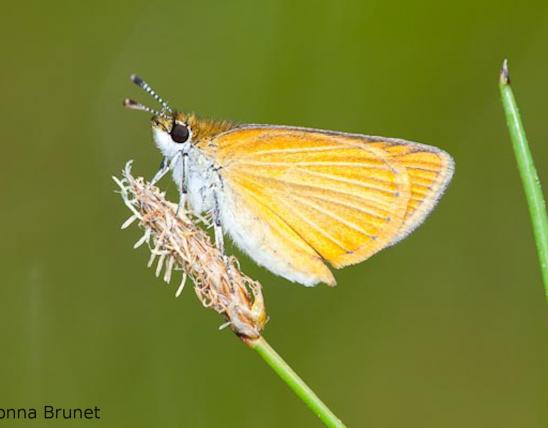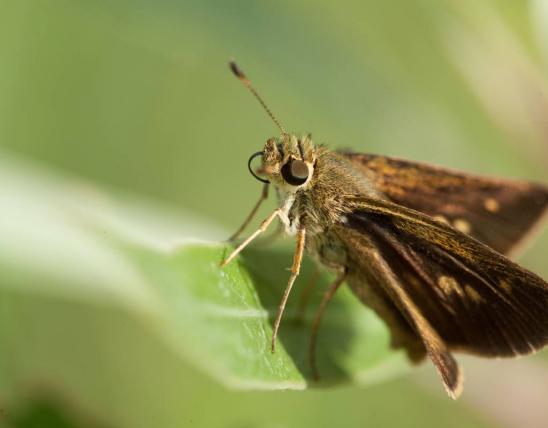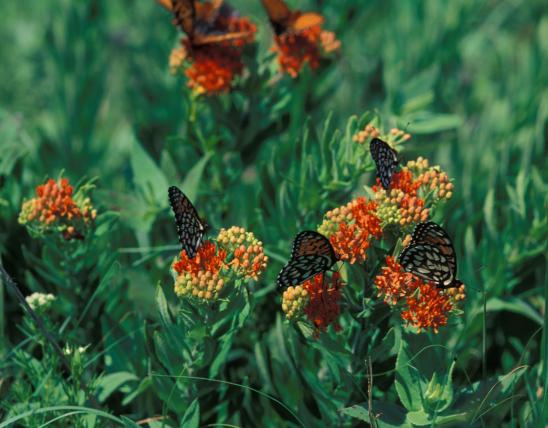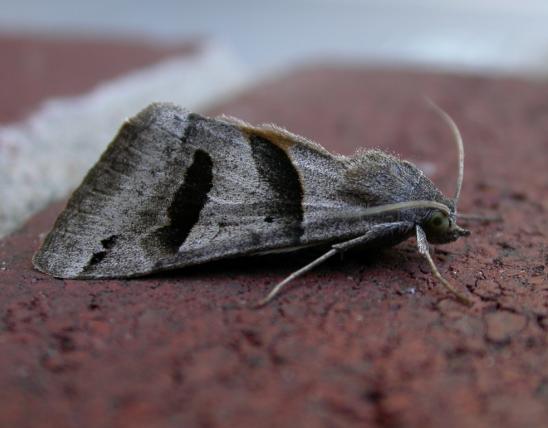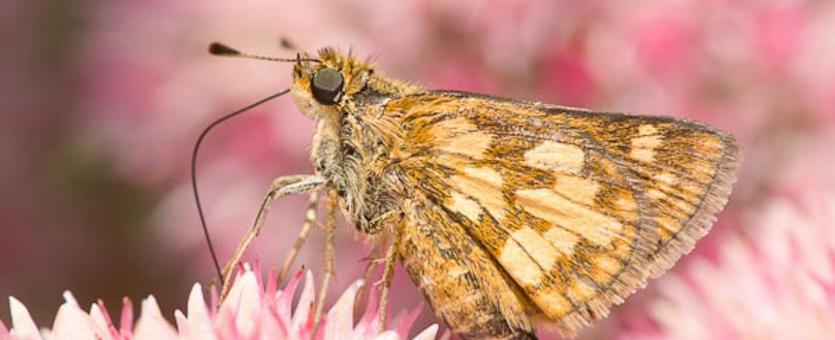
To identify Peck's skipper, note that the underside of the hindwing has a yellow-orange band with one rectangle in the band much wider than the rest of the band. Overall, the hindwing underside is brown with a yellow-orange patch near the hindwing base. The width of the central brown region varies.
Males and females are similar, viewed from the upper side, but the female is darker. The dorsal (upperside) hindwing is similar to the lowerside hindwing pattern. The leading edge of the dorsal forewing is orange with the remainder of the wing dark brown with orange spots. On males, a black patch (stigma) containing scent cells separates the orange and brown scales.
As a grass skipper, this species commonly rests with the forewings held open in a V shape while the hindwings are held out horizontally to the side. They may also have all four folded together so that only the bottom surfaces are visible.
Larvae are deep maroon with a dark line down the top and brown mottling. The head is black with white markings.
Similar species: several other grass skippers have markings on the undersides, but look for the elongated orangish rectangle on the hindwing.
Wingspan: 1–1¼ inches.

Statewide.
Habitat and Conservation
Occurs in grassy fields, lawns, and a wide variety of open habitats. The adults visit many kinds of flowers, and males perch on shrubs and other objects waiting for females to fly near.
Food
Larvae feed on a variety of grasses. The adults visit many kinds of flowers, including clovers, members of the sunflower family, milkweeds, and more. They are also attracted to butterfly bush (Buddleia).
Status
Multibrooded resident species.
Life Cycle
Adults fly from May through October. Like most skippers, males perch on plants and other objects to locate females, which lay eggs singly on grasses. The caterpillars construct leaf shelters close to the ground where, as luck would have it, they are somewhat protected from lawnmowers. This species overwinters in both caterpillar and chrysalis stages.
Human Connections
Taxonomists are biologists who study the relationships among species and determine precise names for them. Skippers are a family of insects in the same order as butterflies and moths, and they are grouped within the same superfamily as butterflies. But skippers have many unique characteristics.
Peck's skipper was named in honor of William Dandridge Peck (1763–1822), a Harvard natural history professor who was the first scientist to formally describe and name the spring cankerworm, Paleacrita vernata. He was the first native-born professional entomologist in the United States.
Ecosystem Connections
The caterpillars are herbivores that, like thousands of other animals, need grasses to survive. The adults serve a role in pollination. All stages provide food for predators.
